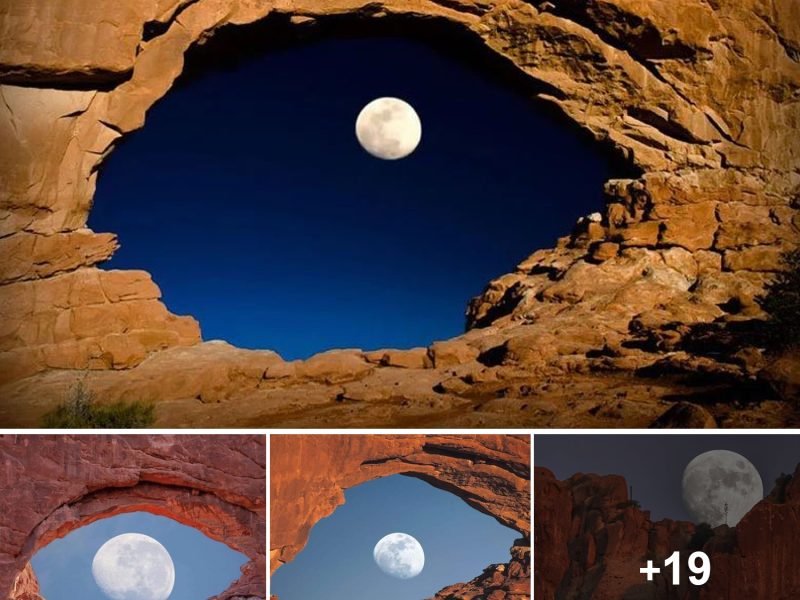Photographers around the world flocked to Yosemite National Park in California this week to catch the incredible natural phenomenon known as Firefall.
While pictures look as if glowing hot lava is spilling over the top of the vertical rock formation known as El Capitan, the rare event is actually caused when the setting sun is reflected off Horsetail Falls.
Sangeeta Dey, a neuropsychologist and photographer who caught the glowing waterfall this year, said: ‘I could not believe what I was seeing. For 10 minutes all of us sat there mesmerized by this spectacle.
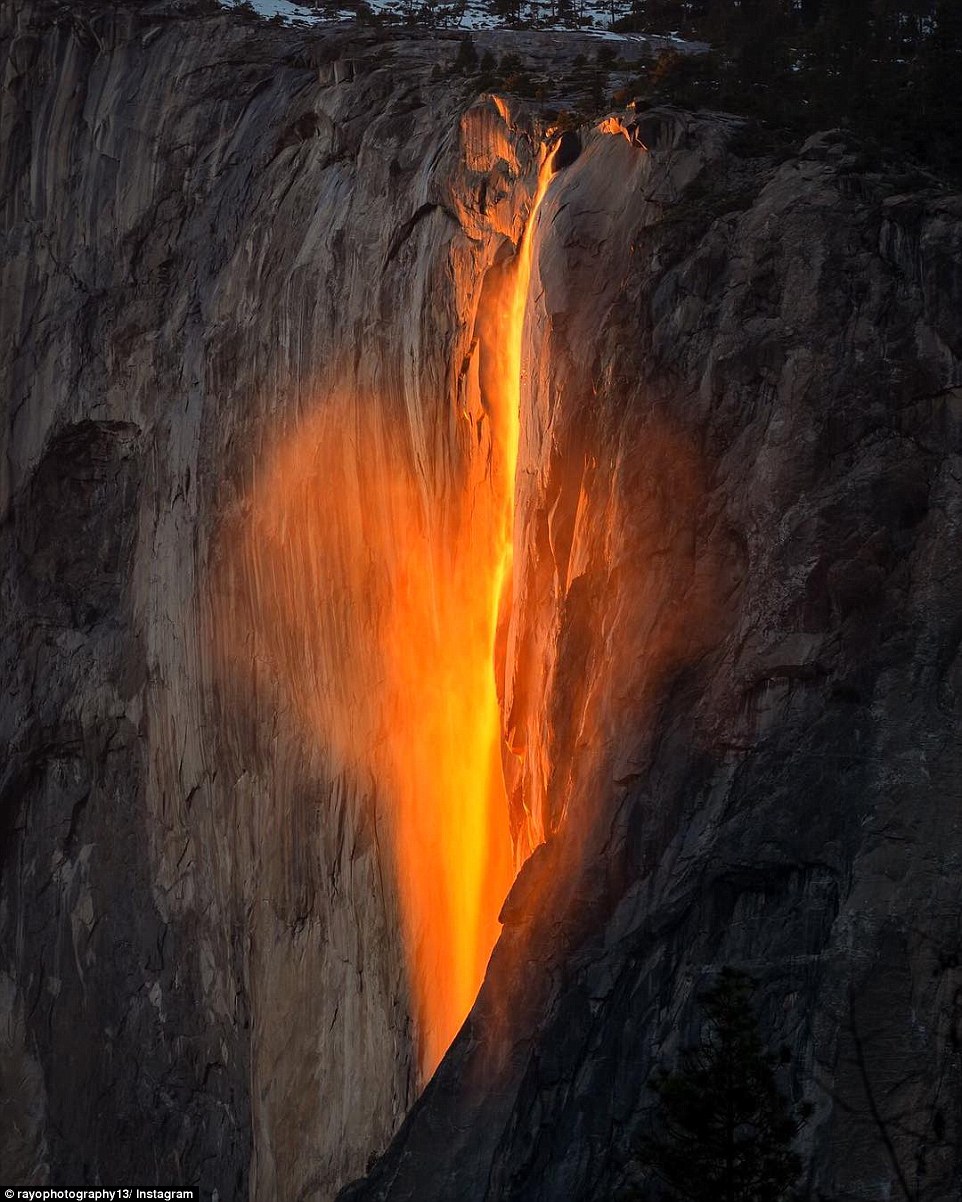
‘When it ended, a few of us had tears in our eyes, while some were clapping and others were just ecstatic to finally get a chance to see it after trying for years.’
Scroll down for video
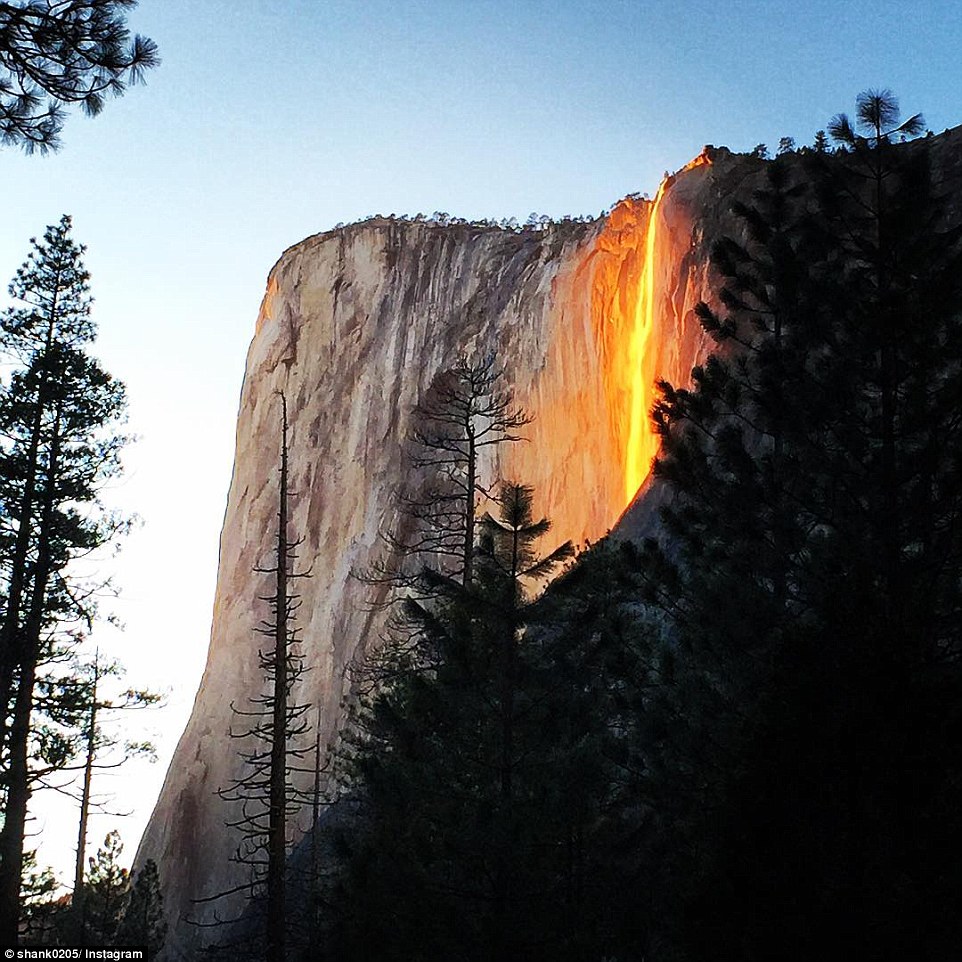
The rare phenomenon occurs when the setting sun lines up and shines on the waterfall running down El Capitan. Temperatures have to be high enough to melt the snow on top of the rock formation, and any precipitation or clouds can obscure the fiery glow

Photographers around the world flocked to Yosemite National Park in California this week to catch the incredible natural phenomenon known as Firefall. This photo, taken on Valentines Day shows a subtle heart shape caused by the mist of Horsetail Falls
Each February, the setting sun lines up at just the right angle with the waterfall. But the phenomenon also requires weather conditions to be just so.
There has to be enough snow gathered at the top in February. Then, temperatures have to be warm enough for the snow to melt and fall 1,570 feet down the eastern face of the rock formation during the brief window of time the sun is in position.
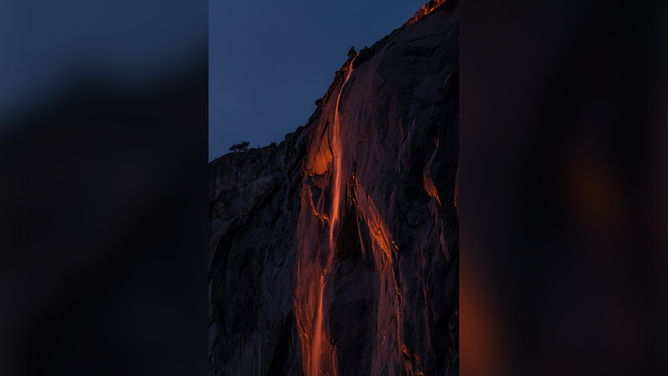
The sky has to be clear as well, since any clouds or precipitation would prevent the sunlight from bouncing off the water.
It’s been several years since Firefall has made its return, especially due to recent droughts, and photographer Dey said: ‘I’ve met photographers who said that they have been coming for 11 years only to see this happen 2 or 3 times.’
Photographer Ray, posting an image on Instagram under the username @rayophotography13, caught Firefall on Valentines Day with the glowing mist forming a subtle heart shape.
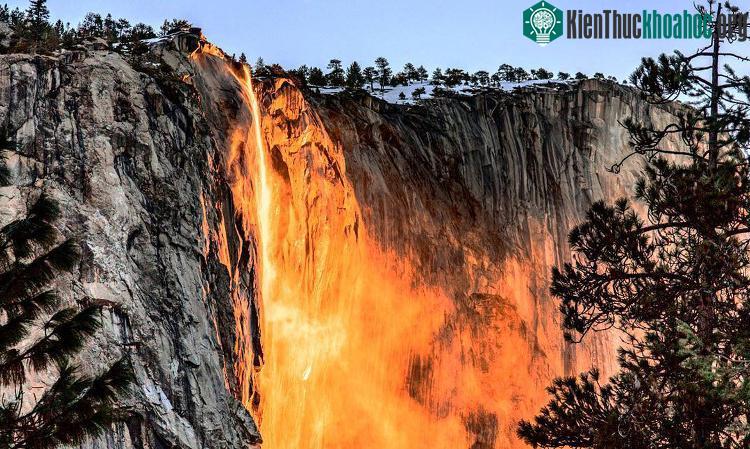
Instagram user@shank0205 caught a stunning photograph of Horsetail Falls in what was his first ever trip to Yosemite. He wrote: ‘I’m happy I got to witness this beautiful work of nature.’
A timelapse video by Reetom Hazarika shows the sunlight moving across the face of El Capitan before it falls right on the waterfall, causing it to take on incandescent purple and orange tones.
The phenomenon takes its name after a similar, manmade effect, caused by burning embers that were pushed off the cliff of Glacier Point in Yosemite.
The practice, which began in the late 19th century, was made illegal in 1968 after it drew large numbers of people.
The first known photograph of the natural Firefall was taken in 1973 by Galen Rowell, who helped the phenomenon gain popularity among other photographers and outdoors men.

Photographer Sangeeta Dey said: ‘For 10 minutes all of us sat there mesmerized by this spectacle. When it ended, a few of us had tears in our eyes. I’ve met photographers who said that they have been coming for 11 years only to see this happen 2 or 3 times’ (file pictures)
